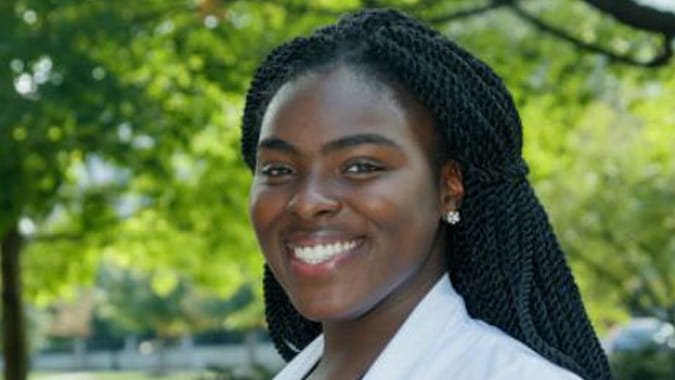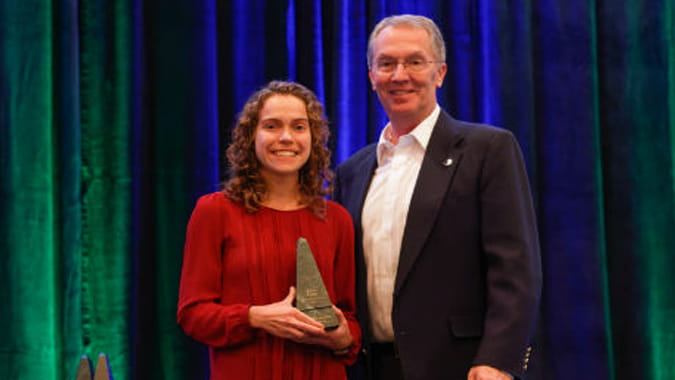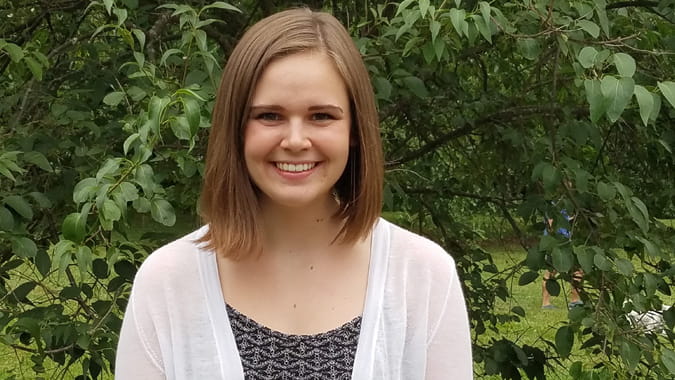Research day encourages scientists-to-be
The first Dr. Margaret Ginn-Pease Annual Research Day, held at Ohio State on May 10, hosted 23 eight graders from Champion Middle School on Columbus’ near east side. They handled dissected pigs’ hearts, toured the health sciences campus and received an up-close look at the Clinical Skills Education and Assessment Center, with its array of training equipment and simulators.
Perhaps most important for these students—primarily African-American boys and girls—they got to meet scientists who looked much like themselves.
“The goal is to expose the students to mentors, to make it personal,” says Wendy Anderson, MD, who helped organize the event. “We’re trying to make sure the kids see themselves in the researchers.”
Dr. Anderson, a pediatrician recently retired from Nationwide Children’s Hospital, works closely with the Health Sciences Academies program, which grew out of a partnership between the Ohio State Wexner Medical Center, Columbus City Schools and Partners Achieving Community Transformation (PACT), an organization aimed at improving educational and economic opportunities on the near east side. The Health Sciences Academies program focuses on low-income and minority students to spark their interest in science and, in the long run, encourage them to consider careers in health-related fields.
Five elementary schools as well as Champion Middle School and East High School participate in the Health Sciences Academies, which organized the research day.
A generous gift helps spark student interest
Margaret Ginn-Pease, PhD, passed away in 2014, a year before the Health Sciences Academies launched. “When I heard about it, I knew it was something that she would have gladly volunteered to participate in.” says William Pease, MD, Res. His endowment gift will fund the research day in perpetuity.
“Margaret was an educator at heart,” he says. “She loved doing research, but she was always bringing students into her lab and helping stimulate other people’s careers.”
The two met as undergraduates at Vanderbilt University. Dr. Pease earned his MD from the University of Cincinnati in 1981 and completed his residency in physical medicine and rehabilitation at Ohio State, where he has an adjunct appointment in biomedical engineering. Margaret Ginn-Pease completed her PhD in medical biochemistry at Ohio State in 1999, then continued as a postdoctoral fellow in human cancer genetics research at The James Cancer Hospital. She most recently was the associate research director in pulmonary medicine at Nationwide Children’s Hospital, where she previously had worked for 15 years in pediatric research. She also taught at the College of Wooster and Capital University.
Her curiosity extended into many branches of science: astronomy, physics, even electricity, notes Dr. Pease. He recalled how excited she was about teaching a class of future elementary-school science instructors at Capital. She encouraged them to show children how to explore the world, he says, “to notice that the sun came up at a slightly different place in the sky and at a different time every day, or to see how electrical circuits worked, how a light bulb turned on when you threw the switch.”
A science-intensive curriculum for minority students
Dr. Anderson has a special perspective on the Health Sciences Academies program. She grew up on the near east side and attended East Columbus Elementary and Champion Middle School before eventually earning her MD from Howard University. “I wanted to be a doctor since I was 5,” she says, and her own experience in an after-school program at Champion with researchers from Bell Labs helped her achieve her dream. “Thinking back, I thank God they decided to volunteer at our school. They shared their love of science with us, the same was Dr. Pease did with her students. They created that realm of possibility: This is something you can do, this is real, this is fascinating.”
The Health Sciences Academies has a similar goal. Elementary students study a science-intensive curriculum; they can then choose to take specialized courses as they move into middle school and high school. Health professionals visit their classes to talk about their work, and they participate in science fairs and go on field trips.
“We take the kids out of one environment into a totally different environment,” Dr. Anderson says. “That kind of exposure – doing it early and as a group, and having one-on-one conversations with caregivers – is really key. It makes all the difference in the world for kids to see that the healthcare world is not scary.
“We go to Nationwide Children’s Hospital or to Ohio State and work on science projects, so they can see themselves there. It’s important for them to visualize themselves in our white coats.”
Dr. Anderson recently visited a group of second-graders who already were familiar with the functions of several organs, thanks to their studies. “There was so much energy and interest,” she says. “They could answer a lot of my questions about the kidneys and lungs. I don’t know if I knew that when I was in second grade, but they did.
“This love of science that we’re sharing with the kids is infectious; they’re taking it and making it their own.”
The Health Sciences Academies looks forward to continuing to celebrate the life of Margaret Ginn-Pease, sharing an enthusiasm for learning, teaching and mentoring, which would have made her proud.



